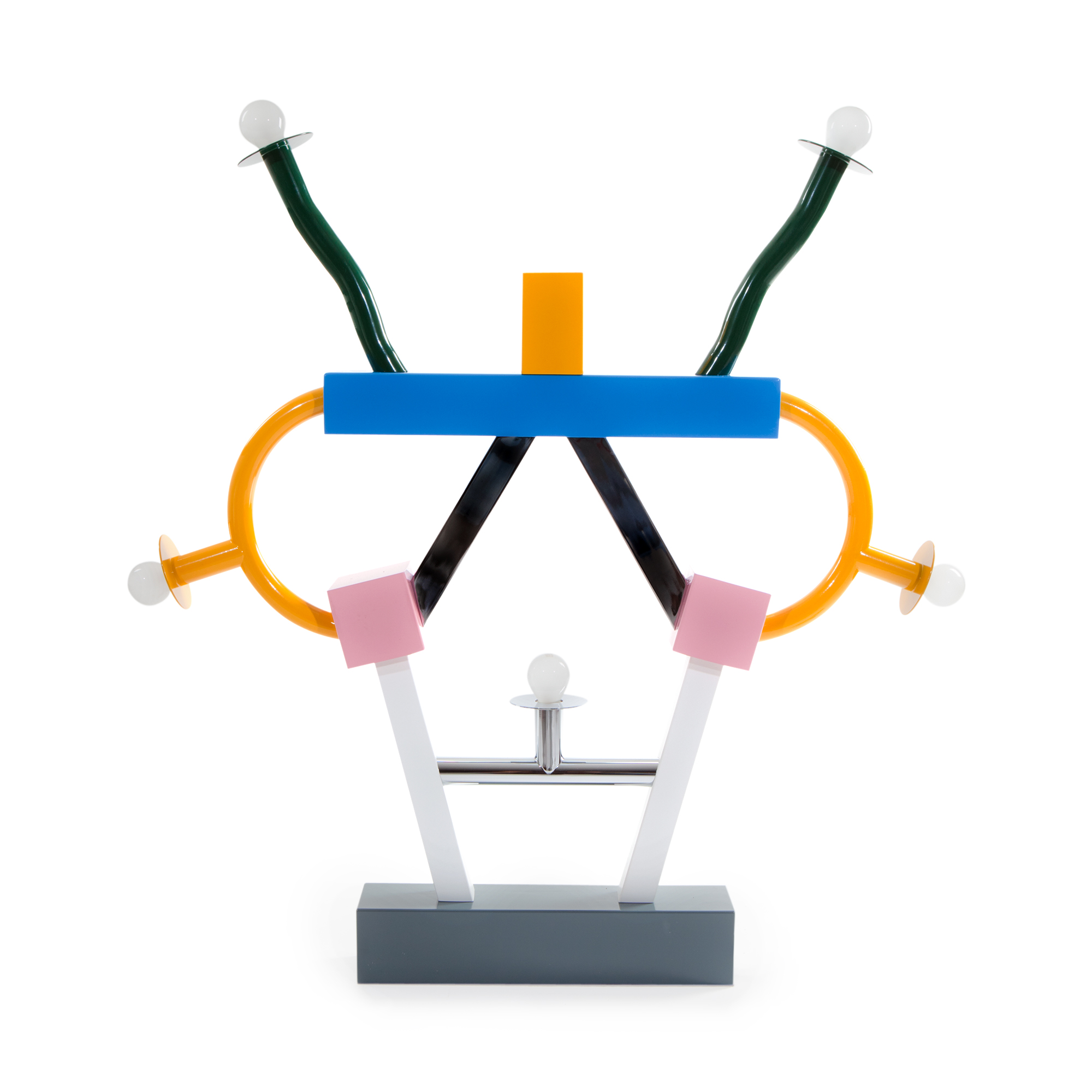Ettore Sottsass

One of the most significant counter-forces to modernism in design history, Ettore Sottsass made monumental artistic contributions to every decade of his working life since starting his practice in the late 1940’s. His career produced a provocative body of work, including architecture, furniture, industrial design, glass, ceramics, painting, photography and a wealth of writings.
For Sottsass, creating a lexicon of design that incorporated emotive, sensorial and humanist concerns was a rebellion against post-war rationalist architecture that valued function over form, and left human nature largely out of the architectural equation. He was moved by the subjective gesture of American Abstract Expressionist painting and the direct resonance of Pop Art. He also looked to ancient eastern cultures for examples of how to create a spiritual connection between form and meaning. A central concern of much of Sottsass’ work is the social, cultural and technical implications of architecture and design on the way people live and interact. Always counterintuitive and built on complex thought-patterns, the notion that a functional object could communicate an abstract idea was revolutionary and has emboldened legions of designers today.
Sottsass’ work can be found in the permanent collections of international museums, including the Brooklyn Museum of Art, New York, NY; the Centre Georges Pompidou, Paris, France; the Design Museum, London, England; the Design Museum, Ghent, Belgium; the Los Angeles County Museum of Art, CA; M+ Museum, Hong Kong; the Metropolitan Museum of Art, New York, NY; Musée des Arts Décoratifs, Montreal, Canada; the Musée des Arts Décoratifs, Paris, France; the Museo di Arte Moderna e Contemporanea di Trento e Rovereto, Italy; the Museum of Fine Arts, Houston, TX; the Museum of Modern Art, New York, NY; Pinakothek der moderne, Munich, Germany; the Stedelijk Museum Amsterdam, Netherlands; the Victoria & Albert Museum, London, UK.
